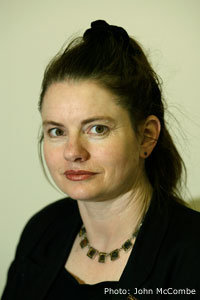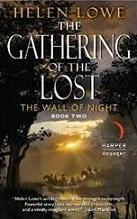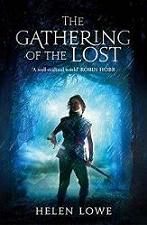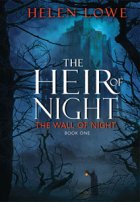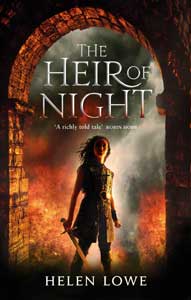“The Poem That is Like A City” by Fiona Farrell — Commemorating September 4, 2010 & the Earthquake Years
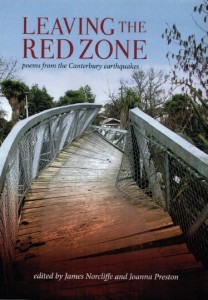 The poem that is like a city
The poem that is like a city
This poem is like a city. It is full of words.
Doing words. And Being words. And words
that compare one thing to another thing
and words that hold everything together.
This poem has a high rise at its centre with
a view across the plains to the hills.
It has a CBD and CEOs and a thousand
acronyms whirring like wheels. This
poem is going places. It also has small
prepositions where people pause, drink
coffee and read the paper. They go to
and from and sit before and behind.
They walk across the park, crunching
like gerunds on white gravel while
watching dogs splashing. Ducks quack
and rise. Like inflections? At the end of
phrases? The way we do here? This
poem is a crowded street where words
clatter in several languages and every
thing you see or touch has many names.
This poem is written in the gold leaf of
faith and in the red capitals of SALE
and BUY NOW and all the people walk
among the words as if they were trees
and ornament and would never fall off
the edges of their white page.
The poem jolts at the caesura and all
the words slide sideways, slip from
the beam in dusty slabs. The children
who were learning how to say hullo
tap good bye good bye in all their
voices, reaching in the dark for the
mother tongue. There is no word in
English for this. No word in any
city.
The poem is palimpsest, scraped
clean each morning and dumped
in the harbour. But at night it rises.
The moon buttons back the dark on
tower block, mall and steeple. Cars
boom hollow on a phantom avenue,
cups fill with froth and nothing and
an empty bus wheezes up Colombo
Street. Stops for the children who
perch, waiting like similes for
chatter and flight, tapping their
abbreviations.
Ths pm is lk
a brkn cty
all its wds r
smshd to
syllbls.
Each syllbl
a brck.
© Fiona Farrell
.
Previously published in Leaving The Red Zone: Poems From The Canterbury Earthquakes, Ed. Norcliffe J & Preston J, Clerestory Press, 2016
Reproduced here with permission.
—

Fiona Farrell
About the Poet:
Fiona Farrell has published poetry, fiction, non-fiction and plays. In 2012 she received the ONZM* for Services to Literature. She is still trying to figure out how to write.
*Officer of the New Zealand Order of Merit
—
About The Poem:
The Earthquakes
Last week was September 4, the ninth anniversary of the 7.1 Canterbury earthquake that began a sustained eighteen months of earthquakes, with aftershocks well beyond that period. Many of the aftershocks were more than big enough to jolt hearts, wear spirits, and stretch nerves. Other events were earthquakes in their own right: February 22nd, June 13, and December 23, all in 2011.
During the main quake period, over 14,000 earthquakes were recorded and the major quakes caused widespread destruction. The February 22nd earthquake killed 185 people and injured many others. Large swathes of Christchurch remain affected and the region is still recovering physically. The mental health of the region’s population has also been badly affected, with significant increases in diagnoses recorded.
Under such circumstances, dates like September 4 are still significant. For many years, the imperative was to batten down and carry on, dealing with the destruction and negotiating everyday life in a compromised environment. Residents and businesses (the people working in them also residents) had to deal with the prolonged demands of insurance claims and the politics of the rebuild as well. Not much bandwidth for reflection, in other words.
Last week, though, thinking about September 4, 2010, but also February 22nd, 2011 in particular, I experienced a huge sadness and grief for all that has been lost: lives, livelihoods, sense of place — a totality that I described, a few years back, as a geography of loss.
The Poem:
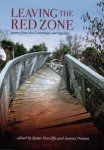 All of which led me to turn to Leaving The Red Zone, an anthology of poems from the Canterbury earthquakes. Fiona Farrell’s poem, The Poem That is Like A City, was already in my mind as I did so. The poem forms the epilogue of the anthology, a place of honour in and of itself, because such a poem (imho) must necessarily capture a sense of the anthology—and by implication its subject matter—as a whole.
All of which led me to turn to Leaving The Red Zone, an anthology of poems from the Canterbury earthquakes. Fiona Farrell’s poem, The Poem That is Like A City, was already in my mind as I did so. The poem forms the epilogue of the anthology, a place of honour in and of itself, because such a poem (imho) must necessarily capture a sense of the anthology—and by implication its subject matter—as a whole.
The Poem That is Like A City does exactly that. As I tweeted at the time, it’s “…clever & tragic & apt. Some of the lines broke my heart all over again.”
And the poem is clever—oh-so-wonderfully clever, in my humble opinion—in the way it uses the structure and forms of language to create the form and structure of the city. So we have “…a CBD and CEOs and a thousand//acronyms whirring like wheels. This//poem is going places.” A little later: “It also has small//prepositions where people pause, drink//coffee and read the paper. They go to//and from and sit before and behind.”
I love the poem’s extended simile of city and poem, and the wit and cleverness with which Fiona Farrell has woven the two together, and the way the love of language informs the whole. I think it’s awesome.
The poem does not stop, though, with the awesome set up in the first stanza. “The poem jolts at the caesura and all//the words slide sideways”, tipping the reader into the subsequent stanzas, where the city as words and the words as city, do indeed “fall off the edges of their white page.” It is tragic, and tore at my heart, remembering: “The children//who were learning how to say hullo/tap good bye good bye in all their//voices, reaching in the dark for the//mother tongue.”
Because this is not just about poetry and the use of language: this is real. The English-language students were real, caught in the collapse of the CTV building and still alive, waiting for a rescue that did not come soon enough to save them. “There is no word in//English for this. No word in any//city.”
I cried last week, reading Fiona’s words and remembering the students and all the 185 who died. As I weep again, typing this. It’s painful; it hurts to remember. Far worse, though, to feel nothing, and to forget. The poem captures something of that, because it “is palimpsest.” As we, the people of Christchurch, are palimpsest: written over with the new while the ghostly past is everpresent—a sense Fiona also captures in the third stanza with the ghostly city that rises by night, where “Cars//boom hollow on a phantom avenue,//cups fill with froth and nothing…”
The Poem That is Like A City is the epilogue to Leaving The Red Zone. It also has its own epilogue, which expresses exactly how I feel, having lived these nine years and their geography of loss:
Ths pm is lk
a brkn cty
all its wds r
smshd to
syllbls.
Each syllbl
a brck.
A brck that was hurled through the window of our collective heart.
I have called The Poem That is Like A City clever, and so it is. Yet if the poem were clever alone, I doubt it would speak to me so strongly. The reason I also call it apt, is not just because it captures the grief of the earthquakes, but because it does so with tremendous insight and pathos and heart.
So thank you, Fiona Farrell: first for writing the poem and secondly for allowing me share it here.

